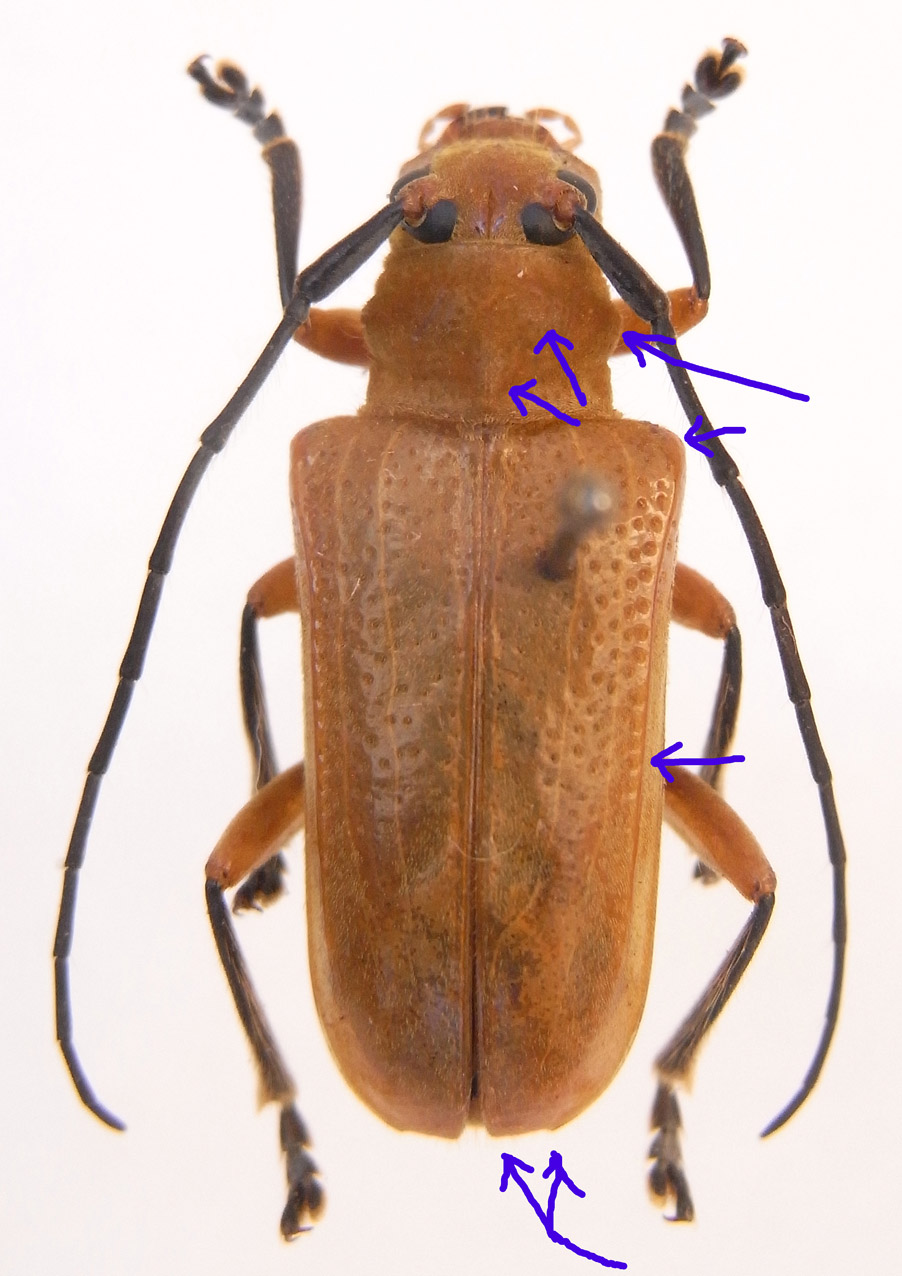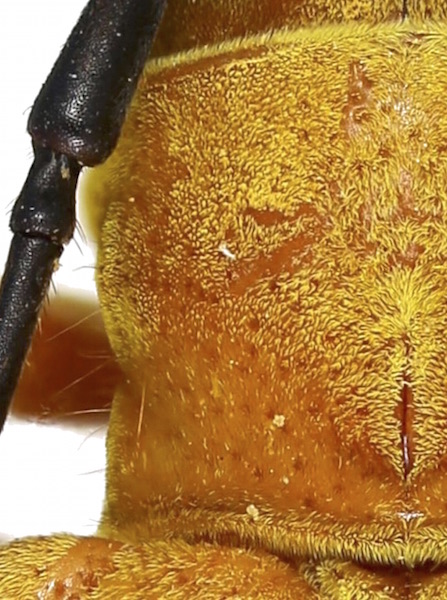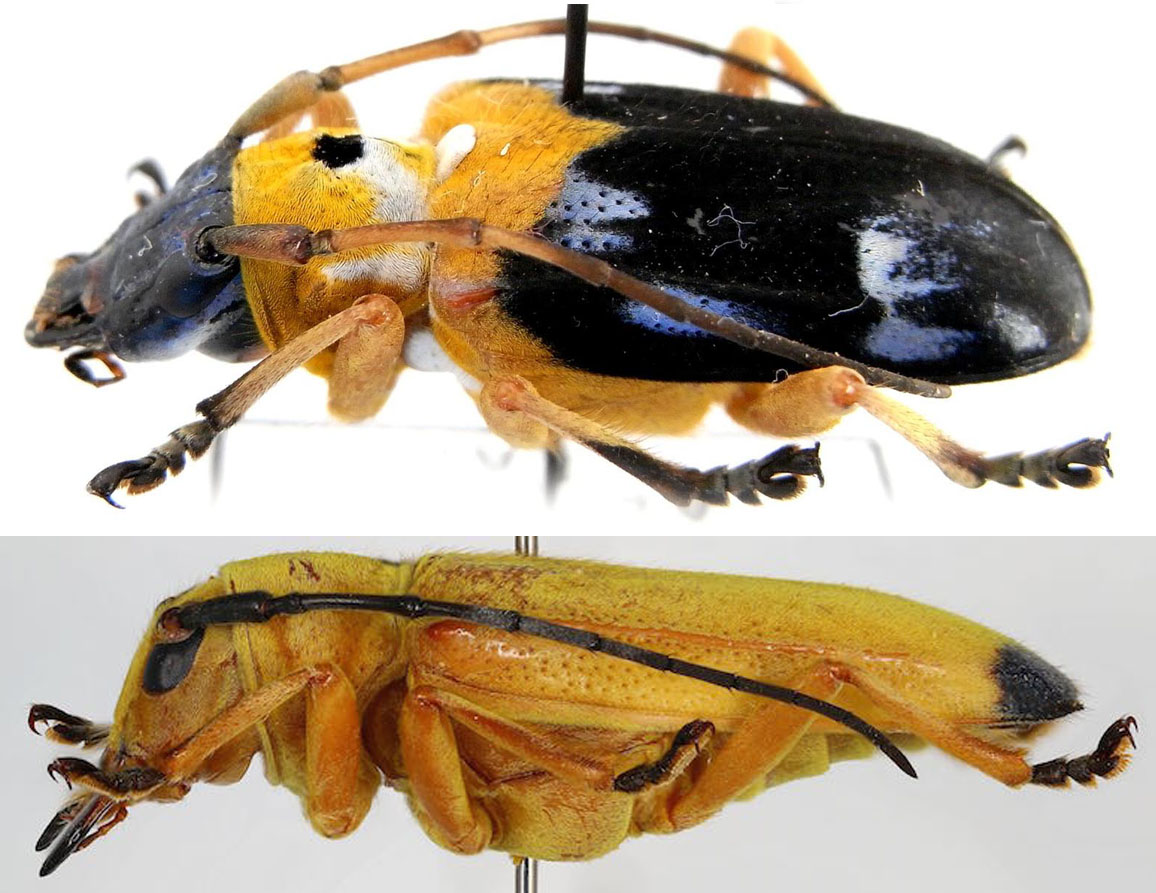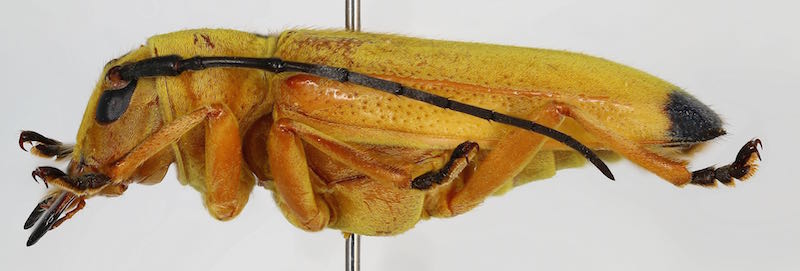| T O P I C R E V I E W |
| Beckey |
Posted - 25/03/2017 : 00:19:16

200.4 KB
Peninsular Malaysia |
| 15 L A T E S T R E P L I E S (Newest First) |
| Xavier |
Posted - 06/10/2018 : 10:58:30
Yes, it fits well with the description.
...and holotype picture is now available here. |
| Beckey |
Posted - 06/10/2018 : 01:57:37
Glenea cyanura Gahan, 1907 |
| Xavier |
Posted - 31/03/2017 : 07:44:11
...but it is also possible that this species has been described by Pascoe, Gahan , etc, under the name " Glenea " because of apical spines...So you must check many text to go further.
For the subgenus, Glenea (Accolona) astathiformis Breuning, 1958 seems very close to your species. Have a look to specimens here and holotype here . |
| Beckey |
Posted - 30/03/2017 : 23:01:25
Xavier, thank you for your kindly advice.
I intend to try. |
| Xavier |
Posted - 30/03/2017 : 17:49:37
Dear Shinichi,
Your species is none of the nine Glenida species, so it is a new one, and you should describe it ( quickly  ) in genus Glenida Gahan, 1888 . E. Vives has described ( Glenida dauberi Vives & Heffern, 2016 ) from Borneo which is very far from typical species of the genus ! . Your species is closer to "true" Glenida: ) in genus Glenida Gahan, 1888 . E. Vives has described ( Glenida dauberi Vives & Heffern, 2016 ) from Borneo which is very far from typical species of the genus ! . Your species is closer to "true" Glenida:

233.91 KB
Here a Glenida luteago Holzschuh, 2013 from Laos.
* apex of elytra is not rounded (like your species)
* 3 bumps on the pronotum (one at middle and longitudinal, and 2 others at side)
* tooth at side of pronotum : Glenida sulphurea Vives & Heffern, 2016 has no tooth at side of pronotum
* proeminent shoulders
* a ridge at side of elytron
* etc
Dan , it should be nice to see your specimens. |
| dryobius |
Posted - 30/03/2017 : 13:47:12
I can not take a good photograph with my camera. Sorry. |
| Xavier |
Posted - 29/03/2017 : 19:37:54
Could you add some pictures of a female, Dan ? |
| dryobius |
Posted - 29/03/2017 : 19:29:28
I have 3 specimens from Sabah that match. One male (large mandibles) and 2 females (smaller mandibles). No name. |
| Gerard |
Posted - 29/03/2017 : 16:55:08
Bonjour Shinichi, pour moi c'est nouveau.
Je ne connais pas ce genre, c'est entre les Stibara et les Glenea. |
| Beckey |
Posted - 29/03/2017 : 14:13:06
Pronotum

122.17 KB |
| Xavier |
Posted - 28/03/2017 : 18:01:58

213.24 KB
To compare with Glenida cyaneofasciata Breuning, 1952,...
Same flat head with less strong mandibles, same antenna, same humeral ridge on elytra, but spined apex and no tooth(?) at pronotum.
Could you add a picture from side of pronotum ?
It is not a Glenida sp., so I wonder if it is a Glenea sp. ? A new genus and a new species to describe...? |
| Beckey |
Posted - 27/03/2017 : 22:35:50
Thank you, Xavier. |
| Xavier |
Posted - 26/03/2017 : 17:24:03
Ok, it should belong to another genus... |
| Beckey |
Posted - 26/03/2017 : 14:11:37
Its mandible is bigger than most of Saperdini.

43.11 KB |
| Xavier |
Posted - 25/03/2017 : 09:04:19
It looks like a Glenida Gahan, 1888, but without tubers at side of pronotum, and with angular elytra apex ...So, a Glenea sp. ? |


